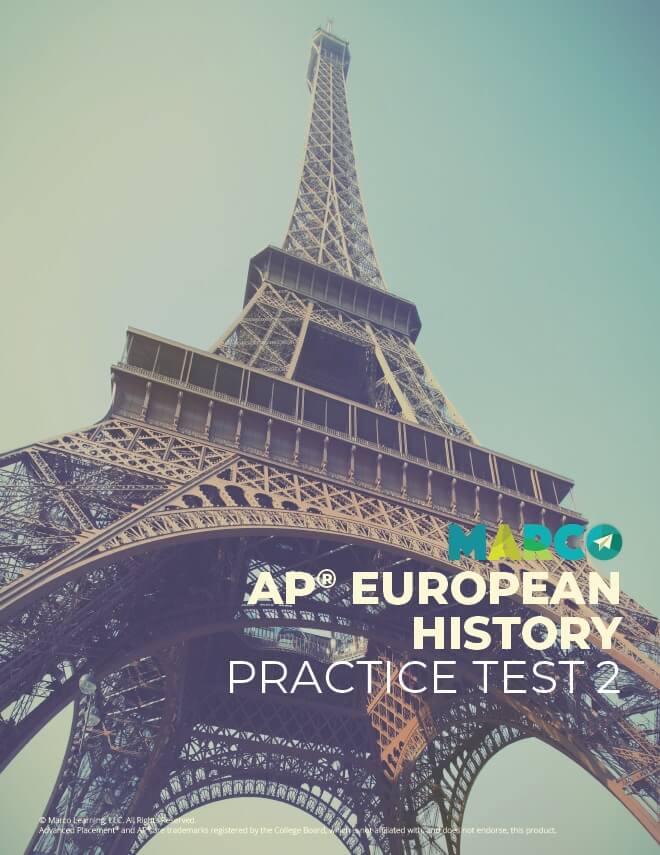


WORLD WAR I
During the early 20th century, imperialism and nationalism were often combined with militarism, in which European counties competed in the number and types of military technologies that they could amass to their cause. Many of the newly developed technologies of the Second Industrial Revolution were utilized in the guns, poison gas, tanks, and submarines.
The Alliance System developed by Otto von Bismarck was able to maintain peace for a period of time despite these tensions, but the assassination of Archduke Franz Ferdinand in 1914 turned a regional dispute in the Balkans into a worldwide war when nation after nation joined their allies. Troops were not able to advance against new technologies, eventually leading to the development of trench warfare. When World War I ended in 1918, the Treaty of Versailles punished Germany for its role in the war by requiring that Germany admit guilt and pay reparations to the Allies. President Woodrow Wilson of the United States proposed a League of Nations to negotiate further disputes, but he was unable to convince the U.S. Congress to allow the United States to join with its European allies.
DADA
Developed as a reaction to the senseless losses and widespread disillusionment of World War I, Dadaism emphasized irrationality and nonsense in art. It was an explicit rejection of logic, reason, and predictable responses under the belief that rationality had led to World War 1. Dada artists employed several different techniques, including found art, collage, and illustration. In 1917, Marcel Duchamp submitted Fountain, a signed urinal, to the Society of Independent Artists. Although it was rejected, it has become one of the most recognizable pieces of Dada art for its rejection of social norms.
THE RUSSIAN REVOLUTION
Against the backdrop of growing nationalism and imperialism across Europe, the Russian people began to express discontent with their political governance. In the 1905 Revolution, a group of unarmed demonstrators attempted to petition Tsar Nicholas for more rights and protections for the working poor. The Russian Imperial Guard fired on them on Bloody Sunday, which led to an upwell of sentiment in favor of the protesters that forced the Tsar to release the October Manifesto, stating that Tsar’s power would be checked by a constitution and a parliamentary body called the Duma.
These changes were not enough for more radical Russians, especially after the stresses of World War I led to devastating losses to both Russia’s population and Russia’s economy. With living conditions worse than they were in 1905, Vladimir Lenin and the Bolsheviks were able to overthrow the existing government in 1917 and institute a modified communist government that attempted to improve economic conditions through central planning.
FASCISM AND TOTALITARIANISM
Although the Treaty of Versailles resolved the military tensions of World War I, it exacerbated social and economic tensions. The War Guilt Clause, in combination with the crushing expectations of reparations, destroyed the German economy. Germany fell from being the primary industrial manufacturer in Europe to an economy characterized by hyperinflation, low employment, and debt. Although many other countries also experienced a Great Depression following the war, the economic devastation in Germany, combined with a sense of disillusionment and dissatisfaction, led to the rise of the Nazi Party and its promise to restore Germany to its former glory. The leader of the Nazi Party, Adolf Hitler, utilized fascist and racialized rhetoric to begin a program of military rearmament and expansion. His policies of racial superiority and bigotry would culminate in the Holocaust.
The poor conditions in post-war Europe also led to the rise of fascist leadership in Italy under Benito Mussolini and in Russia under Joseph Stalin. Both leaders imposed fascist dictatorships by exploiting post-war bitterness and eliminating any dissent against the new regime through military force and the secret police.
The Alliance System, in conjunction with nationalism, imperialism, and militarism, led to a regional dispute in the Balkans becoming a worldwide war.
CAUSATION
Radical leaders took advantage of the global economic crisis following World War I to impose totalitarian regimes. These regimes utilized nationalistic and imperialistic rhetoric to justify programs of expansion, leading to another worldwide war, World War II.
WORLD WAR II
World War II was primarily caused by German expansion as a result of the Nazi Party’s policy of lebensraum (“living space”), which used nationalistic rhetoric to annex territory with German speakers. Germany rapidly advanced into the Rhineland, Austria, and Czechoslovakia with very little opposition from other European nations. After Nazi Germany quickly invaded Poland using the blitzkrieg strategy, European powers began to take sides either for or against Germany’s actions.
Germany led the Axis powers of Italy, Japan, Hungary, Romania, and Bulgaria. The inclusion of Japan as Germany’s ally developed a Pacific theater for the war separate from the European conflict. The Axis Powers were opposed by the Allies, which primarily consisted of Britain, France, the USSR, Belgium, and the United States. Despite Axis targeting of London, Winston Churchill rallied support from the civilian population to continue and strengthen the British war effort. World War II was an industrial war dominated by a military arms race that threatened the risk of global nuclear war, especially after the United States dropped atomic bombs on Hiroshima and Nagasaki.
TIMELINE
1917 The Russian Tsar is removed from power, beginning the Russian Civil War that would ultimately lead to the rise of the Bolsheviks.
1919 The Treaty of Versailles is signed, forcing Germany to accept both the War Guilt Clause and an obligation to pay reparations.
1925 Benito Mussolini gains power in Italy.
1933 Adolf Hitler becomes Chancellor of Germany, leading the Nazi Party to power.
1945 World War II in Europe ends with the surrender of the Germans. World War II ends when the Empire of Japan surrenders to the Allies. The Allied forces immediately occupied Japan.
The best way to get better at something is by practicing.
That’s why it’s so important that you take practice tests to help you get better at the AP European History Exam. Only then can you expect to get a good score—and even improve your score.
Download your free AP® European History practice test HERE.
Download your printable study guides for all of the units for AP European History HERE.
 Help
Help